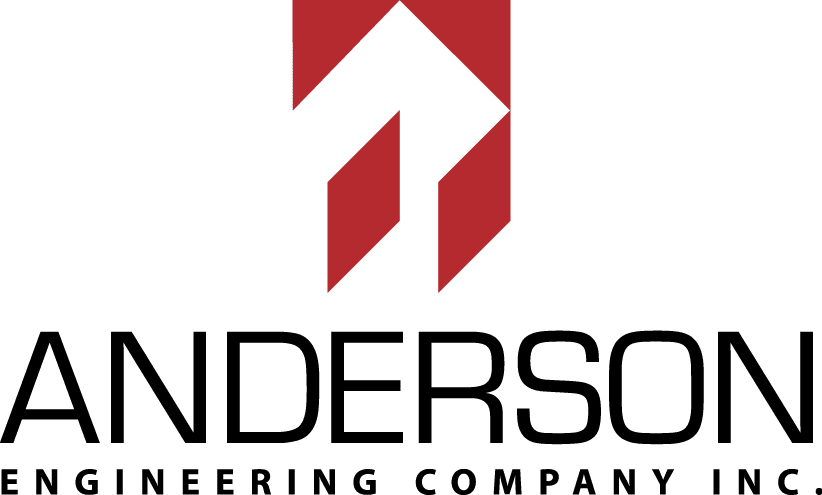Navigating the complexities of environmental permitting in construction can feel overwhelming. Many professionals face delays and compliance issues that increase costs and project risks. This article will explore the significance of a strong permit management framework, key components that ensure its effectiveness, and strategies for improving processes. By engaging with this content, readers will gain valuable insights into minimizing hazards and optimizing their permit management efforts, ultimately leading to smoother project execution and reduced operational risks.
Key Takeaways
- Effective permit management frameworks enhance compliance and streamline project execution
- Cross-departmental collaboration minimizes miscommunication and accelerates the permitting process
- Technology integration simplifies tracking and improves real-time access to permit information
- Regular audits and stakeholder feedback are crucial for continuous improvement in permit management
- Proactive regulatory engagement fosters better relationships and smoother permit approvals
Understand the Importance of a Robust Permit Management Framework

Permit management involves overseeing permits such as environmental permitting and regulatory compliance essential for project execution. A robust framework aims to streamline processes, ensure adherence to regulations, and minimize risks associated with non-compliance. Common challenges include delays in permit approval and miscommunication between stakeholders. Effective permit management frameworks significantly enhance project success by fostering accountability and improving operational efficiency.
Define Permit Management and Its Role in Compliance
Permit management encompasses the systematic approach to obtaining, tracking, and renewing permits necessary for project execution while ensuring regulatory compliance. By clearly defining roles and processes within a robust permit management framework, organizations can mitigate risks associated with non-compliance, which may lead to costly fines and project delays. Effective permit management not only safeguards against legal repercussions but also enhances communication among stakeholders, ultimately leading to timely project advancement:
- Streamlines processes for obtaining necessary permits.
- Enhances communication between stakeholders involved in the project.
- Reduces risks associated with regulatory non-compliance.
- Improves accountability and transparency throughout the project.
Identify Key Objectives of a Permit Management Framework
The key objectives of a permit management framework are crucial for ensuring project success amid regulatory challenges. These objectives include providing a structured process for acquiring necessary permits, enhancing communication between all stakeholders involved, and mitigating risks associated with non-compliance. By establishing these goals, organizations can streamline operations and ensure timely project execution, resulting in increased efficiency and reduced delays:
- Structured processes for acquiring necessary permits.
- Enhanced communication between stakeholders.
- Mitigation of risks linked to non-compliance.
- Increased operational efficiency.
Recognize Common Challenges Faced in Permit Management
Permit management often encounters several common challenges that can hinder project progress. Delays in the permit approval process frequently occur due to complex regulations and inadequate communication among project stakeholders. Misalignment in expectations or miscommunication can lead to further complications, such as costly project delays and increased operational risks. Developing a robust permit management framework helps organizations address these challenges by establishing clear communication channels and streamlined processes, thereby facilitating smoother project execution.
Assess the Impact of Effective Frameworks on Project Success
Effective permit management frameworks play a critical role in enhancing project success by minimizing delays and ensuring compliance with regulations. By establishing clear protocols and communication channels, organizations can avoid potential miscommunications that often lead to costly setbacks. For instance, a construction project that implements a robust framework for tracking permit statuses can respond promptly to regulatory requirements, resulting in streamlined operations and improved project timelines.
A strong permit management framework lays the groundwork for success. Next, it is time to break down the elements that make these frameworks effective.
Analyze the Components of Effective Permit Management Frameworks

Essential components of effective permit management frameworks include the integration of technology for streamlined processes and improved tracking. Cross-departmental collaboration ensures alignment among various stakeholders, enhancing efficiency and clarity. Best practices for documentation and record-keeping provide a foundation for compliance and accountability. Each of these elements plays a vital role in navigating the challenges associated with permit management.
Explore Essential Elements of a Comprehensive Framework
Essential elements of a comprehensive permit management framework include establishing standardized processes that streamline the acquisition and renewal of permits. Integration of technology, such as permit tracking software, allows for real-time updates and efficient communication among stakeholders, ensuring everyone remains informed about the project’s compliance status. By prioritizing collaboration across departments, organizations can address potential issues early, aligning efforts and reducing the likelihood of delays in project execution.
Investigate the Integration of Technology in Permit Management
The integration of technology in permit management significantly enhances efficiency and compliance. Utilizing permit tracking software allows for real-time monitoring of application statuses and deadlines, minimizing the risk of missed permits. For instance, organizations employing cloud-based solutions can improve collaboration among teams, ensuring all stakeholders have access to the latest information, which ultimately aids in successful project execution:
Evaluate the Significance of Cross-Departmental Collaboration
Cross-departmental collaboration is vital in achieving a successful permit management framework. It enables different teams, such as engineering, compliance, and project management, to align their objectives and share information seamlessly. By fostering open communication and integrating their efforts, organizations can minimize misunderstandings and reduce delays, ultimately leading to smoother project execution and compliance with regulatory requirements.
Review Best Practices for Documentation and Record-Keeping
Implementing best practices for documentation and record-keeping is essential for effective permit management. Organizations should establish a centralized system that captures all permit-related documents, such as applications, approvals, and correspondence, ensuring easy access and traceability. For instance, maintaining a digital archive that logs modification histories and communication patterns can significantly reduce errors and enhance compliance, allowing teams to respond promptly to regulatory inquiries and uphold project timelines.
The right components lay the groundwork for success. Now, it is time to implement strategies that will simplify these processes and make them more efficient.
Implement Strategies for Streamlining Permit Management Processes

To effectively navigate permit management challenges, organizations should focus on developing standardized procedures for permit applications, employing digital tools to automate permit tracking, and facilitating training programs for staff on permit protocols. Creating a feedback mechanism for continuous improvement enhances compliance and efficiency in operations. Each of these strategies provides practical insights that are vital for optimizing the permit management process.
Develop Standardized Procedures for Permit Applications
Developing standardized procedures for permit applications is essential for organizations aiming to overcome permit management challenges. By creating clear guidelines that outline the steps for application submissions, approvals, and renewals, projects can minimize inconsistencies that often lead to delays. For instance, organizations can implement a checklist system to ensure all required documentation is collected upfront, reducing back-and-forth communication and expediting the approval process, thereby enhancing compliance and operational efficiency.
Employ Digital Tools to Automate Permit Tracking
Employing digital tools to automate permit tracking can significantly enhance efficiency in the management process. Software solutions specifically designed for tracking permits allow organizations to monitor application statuses in real-time, minimizing the risks associated with missed deadlines or overlooked renewals. For instance, an environmental engineering firm can utilize permit management software to ensure compliance and streamline communication among various departments, ultimately leading to smoother project executions and on-time completions.
Facilitate Training Programs for Staff on Permit Protocols
Facilitating training programs for staff on permit protocols is essential for effective permit management. These programs equip employees with the knowledge necessary to navigate complex regulatory landscapes, ensuring that they understand the importance of adherence to permit requirements. Organizations can implement role-specific training sessions that focus on the nuances of their particular projects, thereby reducing the likelihood of non-compliance and enhancing overall operational efficiency:
Create a Feedback Mechanism for Continuous Improvement
Creating a feedback mechanism is essential for continuous improvement in permit management processes. Organizations should implement regular review sessions where team members can share insights on bottlenecks and successes encountered during permit acquisition and compliance. By capturing this feedback, companies can identify areas for enhancement, streamline operations, and reduce future permit management challenges, ultimately leading to more efficient project execution and compliance adherence.
Streamlining permit management processes is essential, but it only scratches the surface. Building strong regulatory relationships can turn challenges into opportunities, paving the way for smoother approvals.
Cultivate Regulatory Relationships for Enhanced Permit Management

Fostering open communication with regulatory agencies is essential for enhancing permit management. Building partnerships streamlines the permitting process, while attending industry seminars ensures stakeholders remain informed about current regulations. Engaging in networking helps exchange best practices. Each of these strategies contributes to effective navigation of permit management challenges, fostering a more efficient project execution environment.
Foster Open Communication With Regulatory Agencies
Fostering open communication with regulatory agencies is vital for organizations navigating permit management challenges. By establishing regular dialogues with these entities, firms can gain insights into regulatory requirements and updates, which reduces misunderstandings and enhances compliance efforts. For instance, attending periodic meetings or workshops can provide an opportunity to address concerns directly, enabling organizations to align their project strategies with regulatory expectations efficiently.
Build Partnerships to Streamline the Permitting Process
Building partnerships with regulatory agencies is essential for streamlining the permitting process and reducing obstacles faced during project execution. Organizations can benefit from establishing relationships through regular communication and collaboration, which often leads to a better understanding of compliance requirements. By engaging with regulators early in the project lifecycle, firms can clarify expectations and address potential issues proactively, facilitating a smoother approval process.
Attend Industry Seminars to Stay Updated on Regulations
Attending industry seminars is an effective strategy for professionals involved in permit management to remain informed about evolving regulations and compliance requirements. These seminars provide valuable insights directly from regulatory agencies, helping organizations anticipate changes that may impact their projects. By participating in these events, teams can broaden their understanding of the regulatory landscape, enhancing their ability to navigate challenges and maintain compliance throughout the project lifecycle.
Engage in Networking to Exchange Best Practices
Engaging in networking allows organizations to exchange best practices and insights that can significantly improve permit management processes. By building relationships with peers in the industry, project managers can learn about successful strategies and tools that have proven effective in overcoming common challenges. For example, sharing experiences from past projects can help teams identify potential pitfalls earlier and develop proactive solutions that enhance compliance and streamline permitting timelines.
After building solid relationships with regulators, the next step is to assess how well these partnerships serve the permit management process. Evaluating the effectiveness of this framework reveals opportunities for improvement and ensures that projects move forward smoothly.
Monitor and Evaluate Permit Management Framework Effectiveness

Establishing key performance indicators (KPIs) is essential for assessing the effectiveness of a permit management framework. Conducting regular audits helps identify areas for improvement while analyzing feedback from stakeholders and regulatory bodies provides valuable insights. Adapting the framework based on evaluation results ensures continuous enhancement and alignment with evolving regulatory demands, ultimately streamlining permit management processes.
Establish Key Performance Indicators for Assessment
Establishing key performance indicators (KPIs) is vital for evaluating the effectiveness of a permit management framework. These metrics should be tailored to assess critical areas such as permit processing times, compliance rates, and stakeholder satisfaction. By regularly monitoring these indicators, organizations can identify inefficiencies in their processes and make data-driven adjustments that lead to improved project timelines and regulatory adherence:
- Define relevant KPIs that align with organizational goals.
- Regularly monitor these indicators for continuous improvement.
- Utilize data to make informed decisions about permit management processes.
Conduct Regular Audits of Permit Management Processes
Conducting regular audits of permit management processes is essential for identifying inefficiencies and ensuring compliance with regulations. These audits provide organizations with insights into their frameworks’ effectiveness and help uncover any gaps in tracking, communication, or documentation. By analyzing the outcomes of these audits, engineering firms can make informed decisions that streamline their permit management practices, ultimately reducing project delays and minimizing the risk of non-compliance.
Analyze Feedback From Stakeholders and Regulatory Bodies
Analyzing feedback from stakeholders and regulatory bodies is essential for refining a permit management framework. Organizations can identify areas that require improvement by actively seeking input on processes and challenges faced during permit acquisition. For instance, conducting surveys or interviews with team members can reveal persistent bottlenecks in communication, enabling firms to address these issues effectively and streamline operations, ultimately enhancing compliance and project timelines.
Adapt the Framework Based on Evaluation Results
Adapting the permit management framework based on evaluation results is essential for continuous improvement in navigating regulatory challenges. By analyzing the data gathered from key performance indicators and stakeholder feedback, organizations can identify specific areas needing enhancement, such as communication gaps or permit processing delays. This information allows teams to implement targeted strategies, fine-tuning the framework to align with evolving regulatory requirements and improving overall efficiency in project execution:
- Establish a review process to evaluate performance metrics.
- Identify areas for improvement based on feedback and audits.
- Implement changes to enhance efficiency and compliance.
- Monitor the impact of adjustments on permit management outcomes.
The assessment of the current permit management framework shows its strengths and weaknesses. Looking ahead, changes in regulations and technology will shape the future of this process, inviting new strategies for success.
Prepare for Future Trends in Permit Management

Emerging technologies are reshaping permit management frameworks, offering innovative solutions for efficiency. Organizations must anticipate changing regulations and compliance needs while exploring strategies to digitize permit processes effectively. Proactive planning for sustainability initiatives will be essential in navigating future challenges. These topics will provide practical insights to enhance permit management practices and ensure regulatory adherence.
Investigate the Impact of Emerging Technologies on Frameworks
Emerging technologies significantly influence permit management frameworks by automating processes and improving data accuracy. For instance, adopting artificial intelligence and machine learning can optimize permit application reviews, speeding up approval times while minimizing human error. By integrating these advanced technologies, organizations can enhance their compliance efforts, streamline communication among project teams, and ultimately navigate permit management challenges more effectively:
- Automating processes reduces manual workloads and errors.
- Advanced analytics provide insights for better decision-making.
- Improved data accuracy supports compliance with regulations.
Anticipate Changing Regulations and Compliance Needs
Organizations must remain vigilant in anticipating changing regulations and compliance needs to effectively navigate permit management challenges. By closely monitoring legislative changes and industry trends, firms can proactively adapt their permit management processes, ensuring they meet new requirements ahead of time. Implementing a system for regular regulatory reviews not only mitigates risks associated with non-compliance but also fosters a culture of agility and responsiveness within teams, ultimately enhancing project success and operational efficiency.
Explore Innovative Strategies for Digitizing Permit Processes
Transitioning to digital permit management processes is essential for organizations looking to enhance efficiency and compliance. Innovative strategies such as adopting cloud-based permit management software can streamline workflows and provide real-time updates on application statuses. This digitization not only minimizes the risk of missed deadlines but also fosters collaboration among teams, ultimately leading to improved project timelines and overall success:
- Utilizing cloud technology to enable remote access to permit documents.
- Implementing automated workflows for application submission and tracking.
- Developing mobile applications for on-the-go approval processes.
Stay Ahead With Proactive Planning for Sustainability Initiatives
Proactive planning for sustainability initiatives is essential for organizations that navigate permit management challenges effectively. By integrating sustainability considerations into their permit processes, firms can enhance compliance with environmental regulations and demonstrate a commitment to responsible practices. For instance, incorporating energy-efficient solutions and waste reduction strategies during project planning improves environmental outcomes. It may expedite permit approvals, aligning projects with the evolving regulatory landscape and stakeholder expectations.
Conclusion
Navigating permit management challenges is crucial for ensuring project success and regulatory compliance. Establishing a robust framework fosters effective communication, streamlines processes, and mitigates risks associated with non-compliance. By leveraging technology and promoting cross-departmental collaboration, organizations can enhance efficiency and execution timelines. Proactive planning and continuous improvement in permit management practices position firms to thrive in an increasingly complex regulatory environment.




